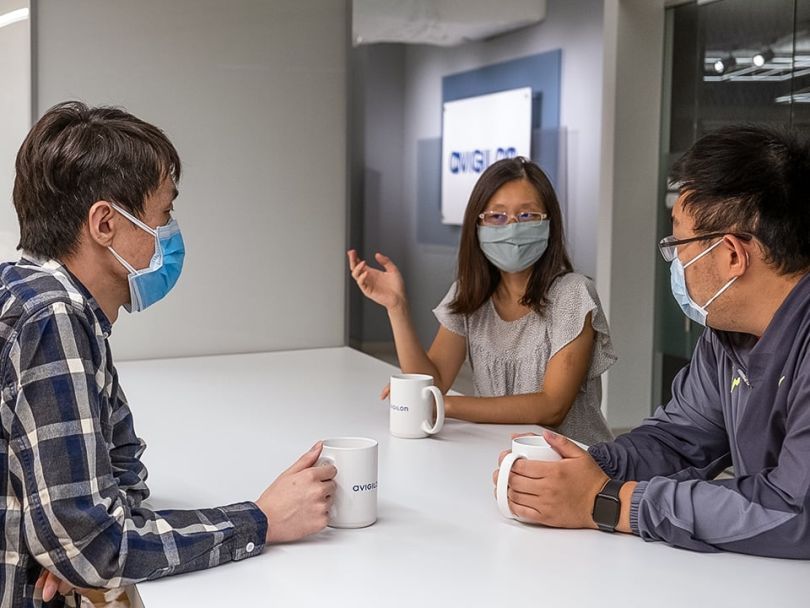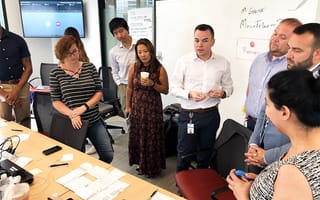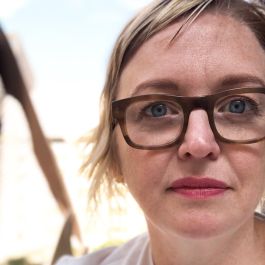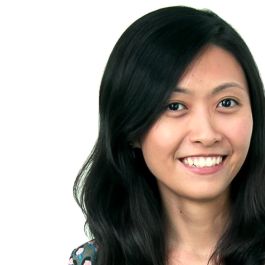Motorola Solutions’ workforce might be 17,000-employees strong — including 2,500 alone in Chicago — but it’s a group just north of 150 teammates that work cross-functionally to drive significant projects for the entire organization.
That team? The chief technology office (CTO), which brings together the communication tech company’s experts on AI and design — including, software user experience, industrial design and customer researchers — to build “purpose-built” hardware and software spanning public safety and enterprise customers.

“Across our portfolio, our goal is to focus on human outcomes and very human-centered design in everything we do,” Senior Director of Artificial Intelligence Jehan Wickramasuriya said.
According to Wickramasuriya, the CTO team is likened to a hybrid model that works hand in hand with a host of other departments.
“Different business units might be looking at a product in different ways. But, because we’re centralized and we can share insights across our team, we’re able to connect product managers together to understand those needs better,” Senior Manager of Experience Research April Starr said.
Our goal is to focus on human outcomes and very human-centered design.”
Fellow CTO member and Senior Director of Innovation and Design LanTing Garra believes that this outward-in process focused on user-centered design is a key element of the organization.
“The CTO is a centralized pool of user experience researchers, human factors specialists, designers and AI experts around the company,” Garra said. “Collectively, we are a unique and collaborative team delivering innovative product solutions from vision to impact.”
Recently, Wickramasuriya, Starr and Garra unpacked a few of the projects that they’re working on, and why close collaboration — both internally and externally — was key to those efforts.
Pandemic-driven tech
Helming the AI and analytics team, Wickramasuriya’s video analytics team was instrumental in developing a suite of COVID-19 solutions for its video security and analytics portfolio.
According to Wickramasuriya, the recently-released video analytics capabilities provide four solutions: assessing the occupancy of an area; assessing the distance between individuals in an area using 3D spatial information; determining whether a person is not wearing a face mask; and lastly, utilizing edge-based analytics for elevated body temperature detection.
The case study: “As organizations begin to return to work, we wanted to provide solutions to help them plan for and manage their journey to normal during this pandemic, focusing on: better workplace situational awareness; providing better decision support for both businesses and employees; and being able to minimize the risk of infection within each of their organizations, whether it’s a school or an enterprise,” Wickramasuriya said.
The tech: “The general problem we’re trying to solve is understanding the 3D geometry of a particular scene and the objects within it. It’s a fundamental capability for our core analytics and, in this case, proactively protects people by using video analytics to determine things like proximity so hotspots can be identified within buildings and necessary adjustments can be made,” Wickramasuriya said of the technology underlying social distancing efforts.
In order to create a solution that could account for the different types of masks or coverings worn by individuals, Wickramasuriya said that they leveraged synthetic data solutions. “We tackled this problem from an algorithmic standpoint but also with a focus on data,” he said. “Utilizing things like synthetic data allowed us to be able to model different types of masks, different colors or variations of angles.”

Additionally, Wickramasuriya stressed the importance of keeping security and privacy front-of-mind for such tech. “Privacy and trust are paramount to everything we do, from the key premise of minimizing the need for humans to watch video to focusing on only the information needed to provide aggregated and actionable data insights to users,” he said.
The process: Wickramasuriya said that the CTO will often “dogfood” — that is, test internally — their solutions amongst the ranks. “The first application of these was to see if we could provide these same human outcomes and value to Motorola Solutions employees across the globe. We have a diverse global organization; so deploying these skills, even while we were developing them and getting feedback from employees, really helped guide the solution,” he said.
Deploying these skills, even while we were developing them and getting feedback from employees, really helped guide the solution.”
Mission-critical software
As the team lead of seven researchers, Starr keeps an ear to user needs.
She applied that expertise when reimagining the CommandCentral software suite, which aims to consolidate the number of applications needed for 911 call takers and dispatchers — a sensitive process that required hyper-fastidious attention to detail.
“Any kind of change could mean somebody’s life or other dire consequences,” Starr said. “We have to be very thoughtful about how we introduce the various trade-offs we’re making. While their current software tools and workflow are extremely outdated and inefficient — leading to burnout and staff churn — we have to be careful about introducing new, modern, intuitive software simply because it is different.”
The case study: Starr’s team researched call takers who would monitor incidents in front of six screens with up to 14 applications. Her team’s goal was to consolidate the number of applications used: “We’re switching from this application-centric model, where you have 14 different applications and somebody has to swivel around to look at all of those different applications, to one card that represents an incident; all of the information from those various applications will be pulled into that card.”
The tech: “We’ve spent a lot of time observing, interviewing and putting designs in front of people,” said Starr, whose team used a “heuristic” to determine if features reduced or increased cognitive load. Additionally, mechanisms like eye tracking were used to assess individuals’ ability to move between applications.
Thoughtful negotiations were required, Starr said. Consolidating applications, for example, meant truncating the amount of information displayed. Navigating those junctures required a collaborative design. “We spend a lot of time co-designing with customers to help them understand the tradeoffs that we’re making to see if those are the right trade-offs,” Starr said. “Is it more valuable to have that information centered on a card? Or is it more valuable to have more information spread across six different screens?”
The process: “The research was absolutely a collaborative process between product managers, designers and the AI team. We’re not an ivory tower; we don’t go off and write white papers. Our research is very applied and hands-on, and we want to involve as many people in it as we can,” Starr said.
Our research is very applied and hands-on, and we want to involve as many people in it as we can.”
Design for public safety
Garra oversees industrial design, user experience, design research and human factors experts, who all collaborated to introduce a smart radio solution for first responders, APX NEXT.
The case study: “We’ve introduced a cloud-connected radio that can be provisioned and updated from anywhere,” Garra said. Her team flipped the current paradigm from a very manual operation to a fully digital experience, reducing the overall customer effort from “months to minutes.” Her team also implemented a simple touch-enabled user interface augmented with eyes-up voice control capabilities. “Simplifying user interaction on the devices allows first responders to focus on the situation and not the technology,” she added.

The tech: “Designing for public safety is very meaningful since we have people’s lives at stake. That drives our passion to design the right solutions for the right moment. We design for the peaks of extreme stress that users encounter during an incident. We ensured the technology is easy to operate while able to withstand extreme environments,” Garra said.
The process: Consistent customer validation and iteration have been the cornerstone of Garra’s team’s success in innovation. “At the beginning of any program, we ask questions to uncover the latent needs of the users — ‘the real problems to solve,’” Garra said. “This is to prevent unnecessary R&D development spend, allowing Motorola Solutions to focus on building the right solutions for our customers.”








